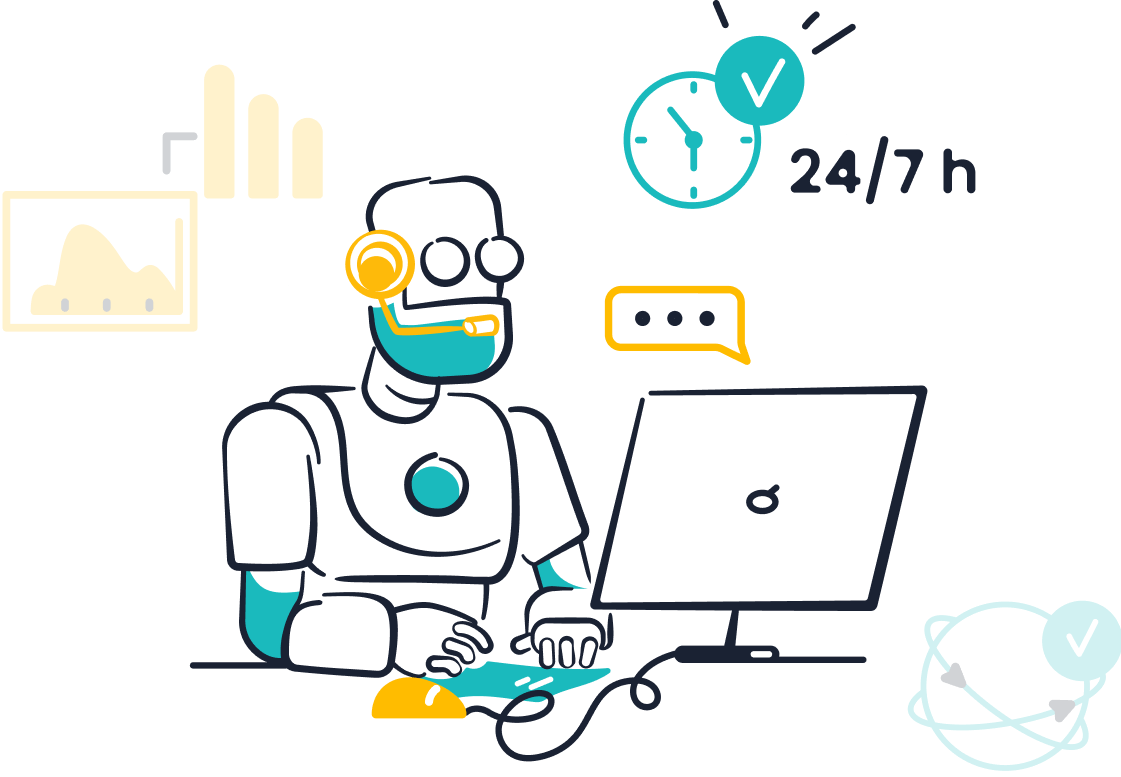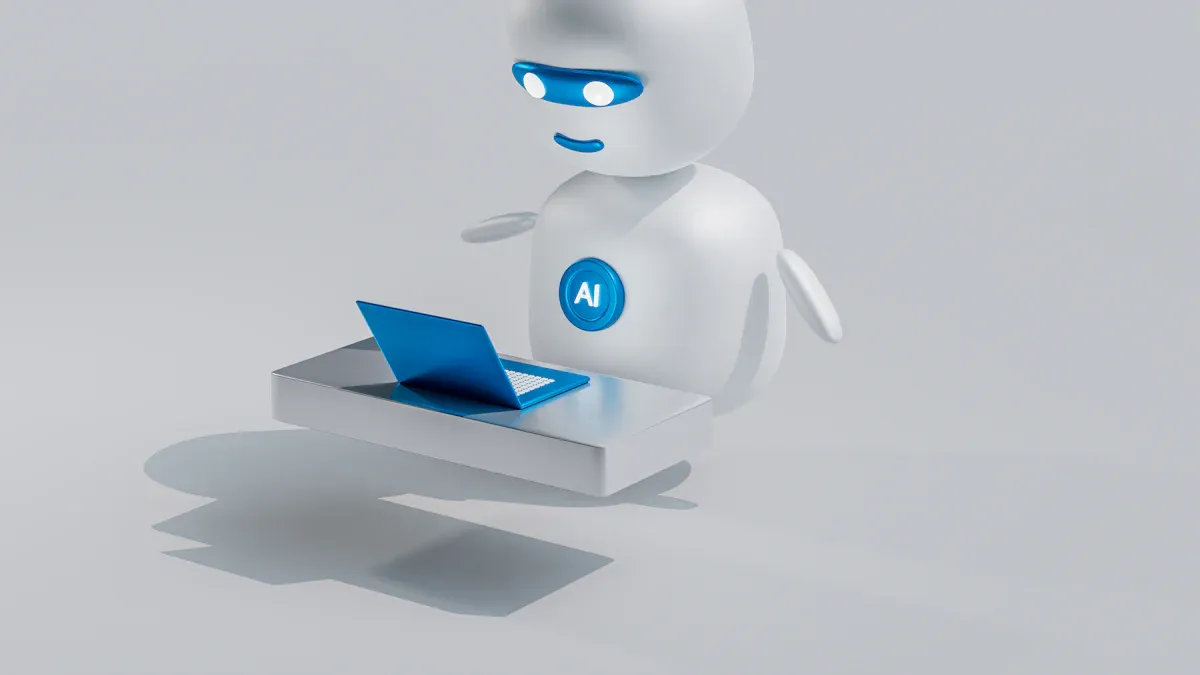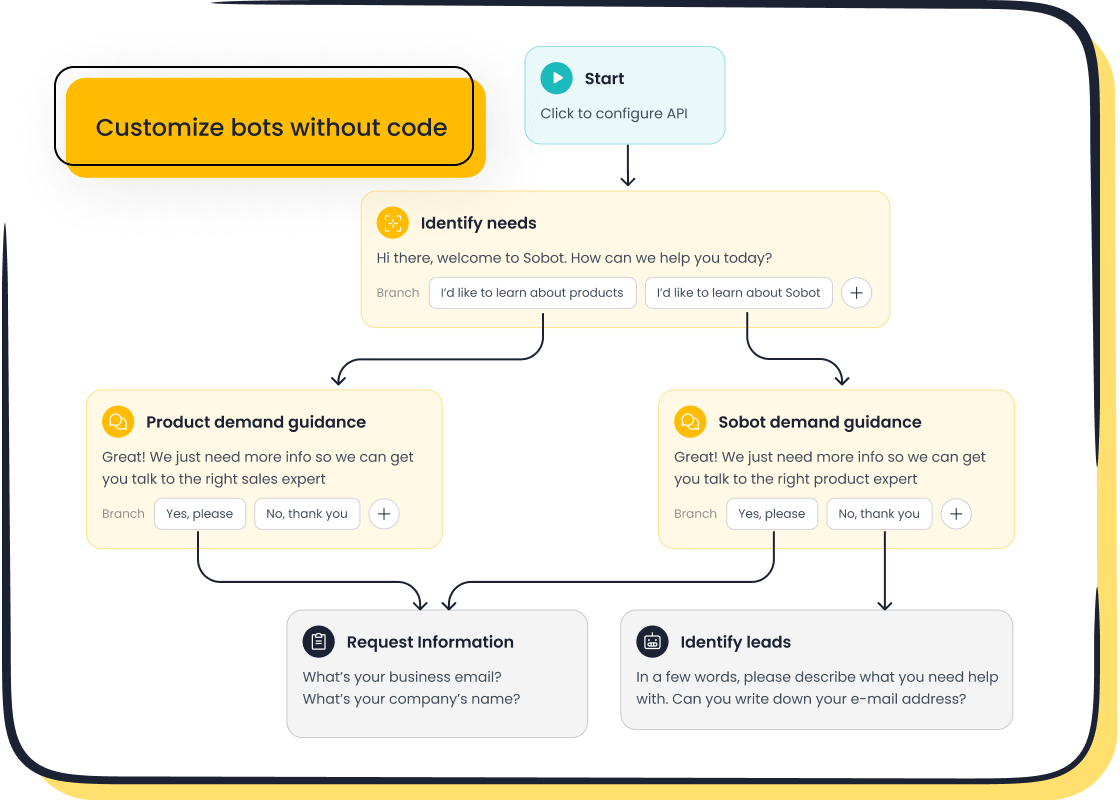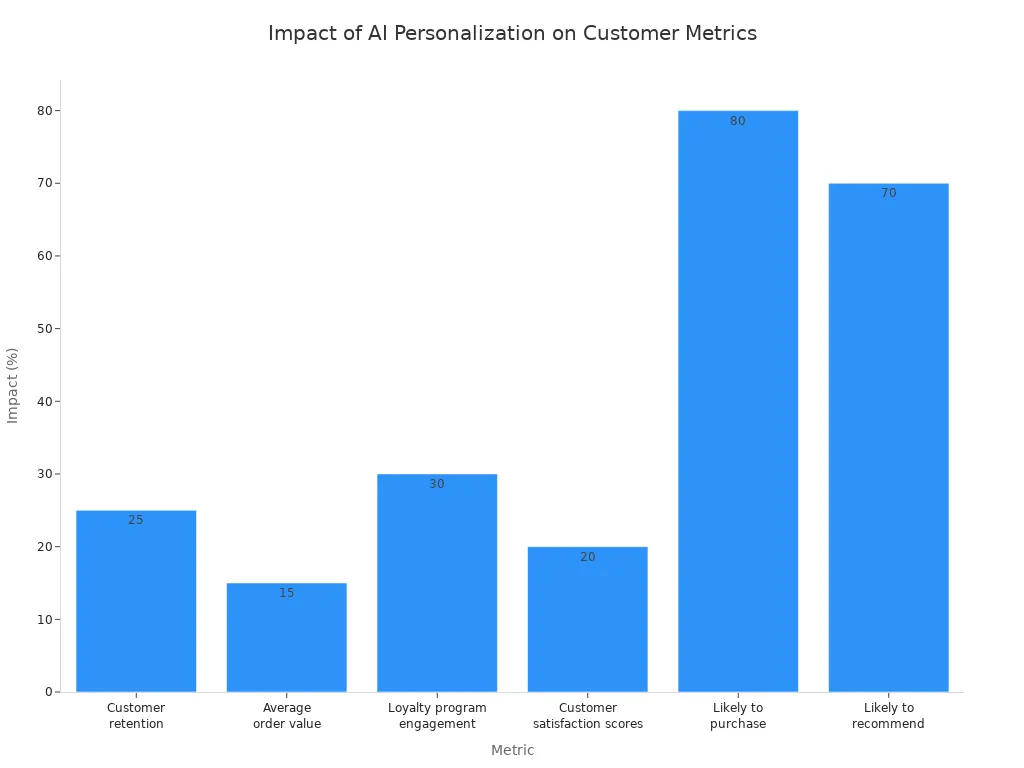Your Guide to Automated Customer Support in 2025

You want to improve efficiency and the customer experience. By 2025, customer service automation is no longer optional. It is a core part of any successful customer support plan. Companies are rapidly adopting AI; nearly half of all support units have already invested in AI technology. Effective customer service automation uses tools like AI-driven chatbots and self-service portals. These automated systems provide 24/7 support and improve your team's focus. This guide offers seven actionable strategies for enhancing customer experience. You will learn strategies to build an effective automated customer support system with tools like the Sobot AI and Sobot call center solutions from Sobot.
UNDERSTANDING AUTOMATED CUSTOMER SUPPORT

You can deliver faster, more consistent service with customer service automation. Automated customer service uses technology to manage routine support tasks without direct human help. This process leverages AI and machine learning to handle repetitive questions. It allows your team to focus on complex customer issues. Effective automated customer support transforms your entire service model.
CORE AUTOMATION COMPONENTS
You need the right tools to build your customer service automation strategy. The core components are the building blocks of modern automated systems.
- AI Chatbots: These act as the first point of contact. They use AI to understand user questions and pull answers from a knowledge base in real-time. For example, Amtrak's AI assistant 'Julie' handles millions of requests a year, boosting self-service bookings.
- Self-Service Portals: These are centralized information hubs. They include FAQs, guides, and articles that empower customers to find their own solutions. Good self-service tools reduce the number of support tickets you receive.
- Intelligent Ticketing: These automated tools use AI to route customer requests to the right agent or department. The system analyzes the ticket's language and needs to ensure a fast resolution.
BENEFITS OF AUTOMATED CUSTOMER SERVICE
Implementing customer service automation offers significant advantages for your business. You can improve efficiency and enhance the customer experience at the same time. The primary benefit is cost reduction. Businesses report that customer service automation can lower service costs by up to 40%.
Workers want AI to automate repetitive, low-value tasks so they can focus on meaningful work.
This leads to another key benefit: empowering your agents. With AI handling common questions, your team is free to manage high-value interactions. Research shows that nearly 70% of employees see this as the main advantage of AI. This shift improves job satisfaction and lets your experts solve the problems that truly require a human touch. Ultimately, a strong automated customer support plan leads to happier customers and a more productive team.
7 EFFECTIVE CUSTOMER SERVICE AUTOMATION STRATEGIES
Now that you understand the core components, you can implement effective strategies. These seven strategies will help you build a robust customer service automation framework. You can transform your customer experience and boost operational efficiency. These effective strategies are your roadmap to success in 2025.
STRATEGY 1: DEPLOY AI CHATBOTS FOR INSTANT CUSTOMER SUPPORT
You can provide immediate, 24/7 answers to common questions by deploying AI-driven chatbots. Chatbots act as the first line of defense, resolving simple issues instantly. This frees your human agents to handle more complex problems. When a chatbot fully resolves an issue, user satisfaction can reach around 70%. An excellent customer satisfaction score is generally considered to be 80%.
Modern AI chatbots offer powerful features that make them essential self-service tools. Key capabilities include:
- Proactive Assistance: The bot can initiate conversations to send reminders or announcements.
- Personalization: It delivers information based on a user's role, location, or history.
- Clear Escalation Paths: The bot seamlessly transfers complex queries to human agents with full context.

Platforms like the Sobot AI Chatbot make this strategy easy to implement. You can design and deploy automated workflows using a no-code, point-and-click interface. Its multilingual capabilities allow you to support a global customer base in their preferred language. By handling routine queries, this AI technology can improve agent productivity by as much as 70%.
STRATEGY 2: BUILD A COMPREHENSIVE SELF-SERVICE KNOWLEDGE BASE
You should empower customers to find their own answers. A well-organized knowledge base is one of the most effective self-service tools you can offer. A staggering 91% of customers report they would use an online knowledge base if it were available and tailored to their needs. This significantly reduces ticket volume and improves the customer experience.
To build a knowledge base that people actually use, follow these best practices:
- Organize Content Effectively: Structure information with broad categories and logical sub-categories. This guides users intuitively.
- Make Finding Answers a Breeze: Implement a powerful search function with filters and keyword tags.
- Use Clear and Concise Language: Avoid jargon. Write in a friendly, straightforward tone to make complex topics simple.
- Always Include Helpful Visuals: Use images, diagrams, and videos to explain steps and keep users engaged.
- Keep Information Fresh and Up-to-Date: Establish a regular review cycle to ensure all content is accurate.
- Seamlessly Connect with Other Tools: Integrate your knowledge base with your chatbot and help desk for consistent answers everywhere.
STRATEGY 3: IMPLEMENT INTELLIGENT TICKET ROUTING
You can ensure every customer query reaches the right expert on the first try. Intelligent ticket routing uses AI to automatically classify, prioritize, and assign incoming support tickets. This customer service automation strategy eliminates manual triage and dramatically speeds up resolution times.
AI-powered triage works by analyzing the content of a ticket the moment it arrives.
- It uses keyword-based routing to identify the issue and send it to a specialized team (e.g., "billing" tickets go to the finance department).
- The AI ensures complex issues reach the correct agent with all relevant context included.
This process directly improves first-contact resolution. When you solve issues on the first contact, customers do not need to repeat themselves or wait for callbacks. This reduces friction and streamlines your entire customer support operation.
STRATEGY 4: USE PROACTIVE OUTREACH AND NOTIFICATIONS
You can move from a reactive to a proactive support model. Instead of waiting for customers to report problems, you can use customer service automation to anticipate their needs. Proactive outreach keeps customers informed and solves issues before they even happen. This is one of the most powerful strategies for enhancing customer experience.
Many leading companies already use this strategy effectively.
| Company | Proactive Outreach Strategy |
|---|---|
| Amazon | Uses predictive analytics to communicate potential delivery delays and offer solutions. |
| Apple | Fosters community and engagement with creative challenges like 'Shot on iPhone'. |
| Slack | Gathers immediate, actionable feedback with micro surveys to resolve issues proactively. |
| Empowers users with a vast knowledge base, reducing the need for direct support inquiries. |
Proactive engagement has a massive impact on retention. Forrester reports that companies using these strategies see a 15% increase in customer retention. AI-driven strategies can save up to 30% of at-risk customers, creating lasting loyalty.
STRATEGY 5: LEVERAGE SENTIMENT ANALYSIS
You can understand how your customers truly feel. Sentiment analysis uses AI to scan customer communications—like emails, chat transcripts, and social media posts—for emotion and urgency. This customer service automation technology acts as an early-warning system, helping you identify at-risk customers before they churn.
The process works in real-time to triage incoming messages:
- Natural Language Processing (NLP) breaks down text to identify words and phrases.
- The system assigns a sentiment score (e.g., positive, negative, or neutral) to the communication.
- It identifies patterns and trends, such as widespread frustration about a specific issue.
- This generates actionable outputs, like escalating an angry customer's ticket to a supervisor.
By monitoring sentiment, your AI can automatically flag negative feedback for immediate action. This allows your team to intervene with proactive calls or special offers, turning a negative customer experience into a positive one.
STRATEGY 6: PERSONALIZE WITH AI-DRIVEN DATA
You can make every customer feel seen and valued. AI enables you to deliver hyper-personalized support at scale. It analyzes customer data—including purchase history, past interactions, and browsing behavior—to tailor every conversation. This is one of the most impactful strategies for building loyalty.
AI uses this data in several ways:
- Personalized Recommendations: AI algorithms suggest relevant products or content, just like Netflix recommends shows.
- Context-Aware Conversations: Chatbots use a customer's history to provide relevant answers without asking repetitive questions.
- Predictive Analytics: AI anticipates future needs, allowing you to offer proactive help or targeted promotions.
The impact of AI-driven personalization is enormous. Companies that excel at it generate 40% more revenue from these efforts.

Personalization directly translates to loyalty. Studies show that 80% of customers are more likely to buy from brands that offer personalized experiences.
STRATEGY 7: CREATE A SEAMLESS OMNICHANNEL EXPERIENCE
You must provide a consistent experience no matter where customers contact you. An omnichannel strategy unifies all your communication channels—like live chat, email, social media, and phone calls—into a single, cohesive conversation. Customers can start a chat on your website, continue it via email, and never have to repeat themselves.
Achieving this requires a platform that can integrate all your channels. A solution like the Sobot Omnichannel Solution creates a unified workspace for your agents. It consolidates messages from every channel into one view, giving your team a complete history of every customer interaction. This automated customer support system ensures a truly seamless journey, which is critical for the modern customer experience. This is one of the most effective strategies for long-term success.
YOUR IMPLEMENTATION ROADMAP
You can successfully transition to customer service automation with a clear plan. This practical, four-step roadmap will guide you through implementing a system that enhances your customer experience and boosts efficiency. Following these steps will help you start your journey toward automating customer service.
STEP 1: IDENTIFY REPETITIVE TASKS
You should begin by auditing your current support workflows. Pinpoint the simple, high-volume questions that consume your agents' time. Automating routine tasks like password resets, order status updates, and basic product inquiries offers the biggest initial return. This first step is crucial for effective customer service automation. It ensures you target the right areas for the best impact on your customer experience.
STEP 2: CHOOSE THE RIGHT TOOLS
You need to select technology that aligns with your goals. When evaluating automated tools, consider their core capabilities.
Key Evaluation Criteria:
- Integration: Does the tool connect with your existing CRM and other platforms?
- Scalability: Can it grow with your business?
- Usability: Is it user-friendly for both your team and your customers?
Choosing the right platform is fundamental to your customer service automation strategy. The right tools will improve your customer experience.
STEP 3: INTEGRATE WITH YOUR CRM
You must connect your new automated tools with your Customer Relationship Management (CRM) system. This integration creates a single, unified view of every customer. Your AI and human agents can access a complete interaction history. This allows for a highly personalized and seamless customer experience. This step in customer service automation prevents data silos and empowers your team.
STEP 4: TRAIN YOUR TEAM FOR HUMAN HANDOFF
You need to prepare your team for a new way of working. Effective training focuses on the collaboration between AI and human agents. Your team must understand when to trust AI suggestions and how to handle escalations. A seamless handoff is critical for a positive customer experience.
- Define Handoff Triggers: The chatbot must know when to transfer a conversation to a human.
- Share Conversation History: Ensure the agent receives the full chat transcript to avoid repetition.
- Establish a Feedback Loop: Continuously review handoffs to improve the AI and the process.
Proper training for this new model of customer service automation ensures that automating routine tasks empowers your agents, improving both efficiency and the overall customer experience.
AUTOMATION IN ACTION: A CASE STUDY

You can see these strategies work in the real world. Look at the success of OPPO, a leading smart device innovator. This case study shows how you can transform your customer experience with the right automation.
THE CHALLENGE
Imagine you are facing a massive surge in customer questions during peak shopping seasons. This was OPPO's reality. The high volume of inquiries led to significant operational issues that damaged the customer experience.
- Slow Response Times: Customers waited too long for answers.
- Ticket Backlogs: Unresolved support tickets piled up.
- Employee Burnout: Support agents became overwhelmed by repetitive questions.
These challenges created friction and dissatisfaction, putting customer loyalty at risk. OPPO needed a solution to improve efficiency and deliver a better customer experience.
THE SOBOT SOLUTION
You can solve these issues with a human-machine partnership. OPPO implemented Sobot’s AI chatbot and automated ticketing systems to manage its support workload. The chatbot instantly handled frequently asked questions, giving human agents time to focus on complex problems.
This solution created a powerful combination. The AI provided 24/7 availability and instant responses, while agents delivered expert help for a superior customer experience.
Sobot also helped optimize OPPO’s knowledge base. This ensured both the chatbot and agents had accurate information, which is vital for a consistent customer experience. The platform unified global communication channels, giving the team a complete view of every customer journey.
THE RESULTS
The impact of this automation was immediate and impressive. You can achieve similar results by implementing a smart automation strategy. OPPO saw transformative improvements across its key metrics.
The chatbot achieved an 83% resolution rate, which is well above the industry average for e-commerce. This efficiency boost led to a 94% positive feedback rate, showing a dramatic improvement in the customer experience. Most importantly, these enhancements contributed to a 57% increase in the repurchase rate. This proves that a great customer experience directly drives business growth and loyalty.
You now have seven strategies for effective customer service automation, from AI chatbots to self-service. The goal of customer service automation is enhancing customer experience by empowering agents. This customer service automation creates a better customer experience. A strong automated customer support plan with automated systems leads to modern customer support. This automated customer service improves the customer experience. Take the first step. Audit your workflows for customer service automation opportunities to improve the customer experience and explore solutions like Sobot to see these strategies and self-service in action. This customer service automation improves the customer experience.
FAQ
What is the main goal of customer service automation?
You use customer service automation to improve efficiency and enhance the customer experience. It handles repetitive tasks, which frees your team to solve complex problems. This strategy leads to faster responses and happier customers.
Will automation replace my human support agents?
No, automation augments your team, it does not replace it. AI handles simple, routine questions. This empowers your human agents to focus on high-value interactions that require empathy and expertise, improving overall job satisfaction.
How do I start with customer service automation?
You can begin by identifying your most frequent and repetitive customer questions. Start with simple tasks like order tracking or password resets. Then, you can choose the right tools that integrate with your existing systems.
Tip: A great first step is deploying an AI chatbot to act as your front line of support.
Can a chatbot support customers in different languages?
Yes, modern AI chatbots offer multilingual capabilities. For example, the Sobot AI Chatbot can interact with your global customers in their preferred language. This feature is essential for providing a personalized customer experience worldwide.
See Also
Transforming Customer Support: The AI Agent Revolution for Businesses
Unlocking Peak Efficiency: AI Software for Superior Customer Service
Elevate SaaS Customer Support Through Effective Live Chat Strategies
Your Essential Guide to Modern Omnichannel Call Center Software
Selecting the Best Social Media Customer Service Software: 10 Key Tips
